Blogs
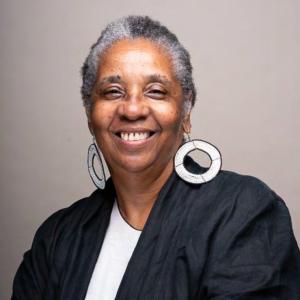
Part One: Ritual Is Communal Learning. We might agree that “community” is a dynamic, divine dance among individuals who, at any given moment, can structure and normalize what might have begun as a spontaneous, enlivening interaction. Community, in the context of our classrooms, can either be a routinized structure of interactions, focused on a set of pragmatics (time allotted, prescribed lessons/topics, inherited answers to repeated questions), or a generative experience, full of imagery and ideas that are liberative to the spirit. In other words, we can create community to fulfill a set of accepted structures about learning, or we can create a space that courageously “touches the spirit.” This is the point of ritual, to touch the spirit, and it involves everyone in the space together experiencing the divine dance. Rituals, when seeking to connect meaningfully to the essence of our being, becomes a point of teaching and learning within the moment. I believe that there are such experiences of ritual in every culture because even as we are human, we are divine. Both aspects of our being desire existence. For those of us in theological education, we have the privilege to focus on both the human and the divine as a responsibility of teaching those called to do spirit work. Ritual invites the community of bearers and seekers to experience this transcendent work together and receive the benefits of communal learning to touch the divine within us together. Part of our challenge is operating in an ecosystem that pays more attention to rules and structures than the divine dance, trusting in our own aptitude and the genius of the spirit to decentralize oppressive rules and structures. My communities called me forth to be a keeper of the ritual. It was not until they gave voice to my “medicine” that I accepted it and began to develop it. Rituals became the first task when I settled myself into class preparation. I would find spaces to just listen. The listening would take even longer when I saw names of learners that I had in a previous class. It was much later that I realized that this listening was paying attention to ancestral voices whose “sight became my vanguard voice.” Ritual not only enlivened the purpose of the course beyond the accumulation of information, but it also afforded each one of us to sit with our individual social location in ritual as an opportunity for personal value in the communal space. With the ritual, we were measuring our worth based upon course content in relation to our lived experiences. We were adding value to the community by our existence and the value of being connected to one another. As I think about the adults who entered those classroom spaces and the complexity of their lives, the ritual space also became a moment of releasing and accepting without having to speak to the specifics of what was/would be going on. This is the healing aspect of ritual. Rituals create space for communal recovery and discovery. Rituals create space for rest. Do I require everyone in attendance to engage the ritual? I do not. Even for those who, in their own way, do not participate in the class rituals, they bear witness to it. And what we do know, is that you cannot unsee what you see, and you cannot unhear what you have heard. This is also the reason why ritual work is a deeply intentional and serious work. It is not an icebreaker or a gesture of novelty. This is an assurance: the presence of a person at the ritual affords them a chance to speak to the spirit.
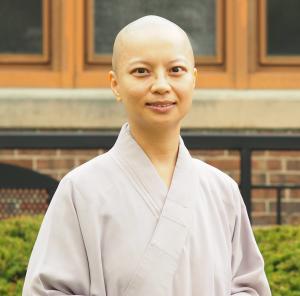
One of my courses is a first-year tutorial designed to fit in with the college-wide objectives to develop new students’ basic academic skills, including writing, critical reading, and oral communication. It also involves individually advising new students to navigate their learning journey until they declare their major field of study. Because the course has multiple goals, it took me a long time to think about an appropriate topic to connect college students’ academic success with their personal lives. I also facilitate students’ embodied learning in their first year. What strategies can I teach them that will enhance their learning progress while adjusting to a new school environment.When designing my course, I found Tammy J. Freiler’s view of being attentive to the entire body as a way of whole-person learning to be helpful. She argues that embodiment is an approach “to construct knowledge through direct engagement in bodily experiences and inhabiting one’s body through a felt sense of being-in-the-world…. It also involves a sense of connectedness and interdependence through the essence of lived experiencing within one’s complete humanness, both body and mind, in perceiving, interacting, and engaging with the surrounding world.”[1] The statement of “complete humanness” inspired my tutorial course topic, “Mindfulness: The Art of Living,” in which I guide students to develop a sense of physical and mental awareness.This is not a meditation course. Instead, the class uses mindfulness as a subject of study. Students study Jeff Wilson’s Mindful America (Oxford, 2014) to build reading, writing, and presentation skills. They also learn how to evaluate the credibility of online resources. While I guide students to take an active role in learning and exploring their academic interests, I encourage them to incorporate mindful practices into their professional performance and everyday life. Teaching the tutorial not only helps me critically reflect upon how to develop a more holistic view of education, but also makes it clear that the traditional approach to teaching mindfulness focuses primarily on the mental aspect, which creates some pitfalls. Although establishing mind-body interaction is the goal, it is easy to neglect the living body as a medium for knowing and connecting with the surrounding world. Several questions and challenges arise, and I have learned at least two noteworthy points about embodied learning. Providing practice-based learning opportunities is not enough. Active engagement is the key to triggering embodied experiences. This notion is too obvious to be overlooked. My first day teaching this class was a bit challenging, in part because it was ironic to guide a discussion about “mindfulness” when students were sleepy. The class started at 8:00 am, a time when young learners felt a lack of energy. Attempting to address this, I added two-minutes of mindful listening (to the natural sounds of birds singing or forest stream), combined with three minutes of relaxing body movement. In theory, this should have been beneficial and meaningful. Some students, however, did not find it useful. Why? The critical element is engaging with the doing and being immersed in the activity. It takes practice to hone one’s mindfulness and cognition. Students cannot gain any constructive effects unless they develop exactly their own whole-body practice, bringing sensory organs and the mind together.Learning space matters, but students may not be mindful of their interactions with the external world. Being at a residential college, all full-time students are required to live on campus, thus there are very few clear boundaries between living and studying spaces. How can I help students develop their bodily awareness in academic environments and beyond? I ask students to write a journal to observe their study habits and in what ways they learn the best. The main concern is whether their bodily activities are related to a learning task in a meaningful way, or not. In addition, I have them pay attention to where the most effective locations that enhance their productivity are, to help students think about how environments affect their cognitive process. Some students report locations where they feel less anxious while doing homework, including the Spencer Grill (a café), the atrium at the Human and Social Studies Center, and outdoors. None of them mention their dorm rooms. Students’ reflections are meaningful, as they develop their bodily awareness on campus, acknowledge the body as a basis for their being in the world, and create a personal connection with their surroundings. Teaching first-year students about mindfulness allows me to reflect that learning involves embodied cognition. Although most agree that mindfulness is a practical approach to dealing with day-to-day issues, not everyone values the importance of being attentive to the body. They tend to take their physical presence for granted, and aren’t aware of body experiences as a way of knowing. Thus, it is my responsibility to guide students to develop cognitive awareness, which can subsequently help them appreciate mind-body integration as a powerful tool to enhance productive learning. [1] Tammy J. Freiler, “Learning Through the Body.” New Directions for Adult and Continuing Education 119, (2008): 40, DOI: 10.1002/ace.304.
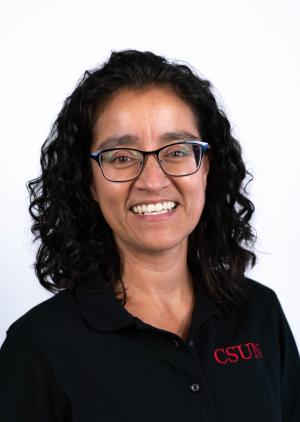
I was asked for pictures of me while teaching in the classroom. An organization I’m part of wanted them for one of their platforms and I obliged. I asked a student to use their phone to take pictures of me during one of our class sessions. I asked them to do it discreetly so the pictures could be as candid as possible. And boy were they candid—and revealing! I was rolling laughing as I saw myself in all kinds of animated postures: down on one knee, face looking upward, arms outstretched toward the sky; all manner of facial expressions and creative hand gestures; nutty drawings of giant circles and spirals on the chalkboard as I tried to explain who-knows-what concept. It was a surprise to me that my teaching style was so animated and a bit dramatic. And while it amused me to see this about myself, it did not make me self-conscious, for even though I had not realized this about myself, my students surely had known me this way the whole time. I got to see what my teaching looked like a little better and know that while there is no single way to teach, I surely had mine. The larger point, of course, is that there is no blueprint to how we embody our teaching, and the more we understand this and understand ourselves, the better we can move into our own. I had received an earlier lesson on embodiment the very first time I presented a paper at the annual meeting of the American Academy of Religion (AAR). I hated every minute of my first paper presentation: I hated the podium—how much it blocked my sense of connection with the listeners and made me feel like I could not see everyone clearly. I hated the microphone because it meant I couldn’t move about and I had to stand on my tiptoes to try and keep it at the right level. I hated reading the paper because it meant I was the only one speaking that whole time. It was a stressful and miserable experience. The following year, then, when I was to take part in a commemorative panel scheduled in one of the very large presentation rooms at AAR, I knew I had to find a way to change my experience of presenting. Through a friend, I received acting coach tips to help me feel more comfortable and confident about presenting. The advice in a nutshell was to experiment and play with the embodiment of the activity: practice being at the podium, around it, in front of it; explore ways to change my spatial relationship with the listeners, the paper, the microphone. Play with time, pauses, moments of possible interactions with the listeners, even if not explicitly verbal. She told me to listen to what my body was telling me through its discomfort—what exactly was not working? —and to explore ways to address and attend to the cause of the experience. I should accept that presenting in the traditional way did not work for me and explore and play with various adjustments and shifts to discover the approach that did work for me. Effectively, she released me from the idea that there was a single blueprint for conference paper presentations and encouraged me to bring myself, mind and body, to discover my own. In my last post I wrote that “we teach humans, not subjects,” and argued that in our teaching it is important to attend to the humans before us first and foremost. It is likewise important to attend to ourselves, to who we are in the wholeness of our mind and body, and to allow ourselves to feel and sink into the embodiment of the teaching relationship. Teaching is relational as much as it is embodied. And it takes some experimenting to find one’s grounding within them both. But before receiving the tips from the acting coach, I received an invaluable tip from a student that has remained with me since my first week as a professor. The Faculty Development team at my university invited students to join the new faculty for lunch and an informal Q & A during the new faculty orientation event. I asked the student sitting at my table, “If you could give one piece of advice to new faculty, what would that be?” He said, “Let us see you as human, sometimes. Be ok showing us your ‘non-professor human side’; it helps us relate to you better.” I always remember that tip—it reminds me that it is okay to bring my peculiar, embodied self to the relational activity of teaching and to give myself permission to sink into it, even with its flair and dramatic gestures. What’s yours?
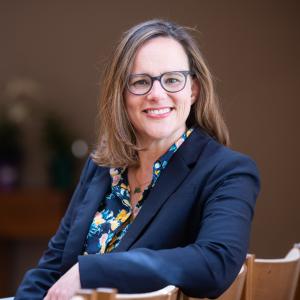
It was a spectacular morning on Emory’s verdant quad. The early October air was just offering the hint of crispness that announced the imminent arrival of fall. The grass, roped off for re-seeding (a detail some students thought revealed loving care for the soil and others thought revealed a desire to control a manicured landscape), shimmered a dewy electric green. The oak trees’ leaves were beginning to flaunt their autumn gold, offset by an expanse of sky the color of a robin’s egg. But then, I noticed two students were standing off to the side of the rest of the class, whispering to each other, smiling, and almost giggling. All my self-preservation alarm bells hard-earned in junior high started going off. What are they laughing at? Is it me? Am I doing or saying something stupid? It was the “Religious Education and Our Ecological Context” class, and we’d come out to the quad on an October morning to discuss and try to practice Sallie McFague’s use (which she borrows from Marilyn Frye) of the concepts of the “loving eye” and the “arrogant eye” when encountering nature.[1] When beholding nature with an arrogant eye, we look upon it as an object, something separate from ourselves for our use and convenience. When beholding nature with a loving eye, we acknowledge its mystery and relationship to us, appreciating it on its own terms. The students were divided into two groups, each of which assumed the point of view of the arrogant eye or the loving eye and asked to make notes of what they saw or encountered in the quad from that point of view. Some students bounded off in pairs or trios, chatting and pointing out what they saw to their classmates, while others slowly wandered off quietly by themselves, pens and notebooks in hand. A couple of students lingered near me, asking a question about an upcoming assignment, perhaps not entirely comfortable with this task of just being in their bodies outdoors. I often incorporate such embodied and contemplative learning experiences, particularly in this class. In fact, the students also were asked to choose a location, near where they live, to observe for five minutes daily. They were invited to marshal all their senses to make note of all the changes in that place as the semester slid from late summer into fall, and then winter. A few weeks earlier, we visited an art installation by Charmaine Minniefield at Emory’s Carlos Museum, Indigo Prayers: A Creation Story. In that work, Minniefield powerfully uses pigments indigenous to Gambia, where her ancestral roots are found, to visually represent the “ring shout,” a dance of prayer and resistance. In these seven very large paintings, installed in such a way that they move slightly as one walks past, the artist’s own body is represented. The paintings tell an embodied story of the relationship between the self and place (and displacement), mirroring a theme for our class. All of this is to say that in this class, which considers the spiritual and moral relationship of the self (and the community) to particular places and to the “more-than-human world,”[2] I have intentionally built in embodied pedagogies to open up paths of knowing perhaps not available in more didactic or even discursive classroom activities. I made this decision on sure theoretical and pedagogical footing: Donna Haraway and Lorraine Code both argue for a more expanded epistemological framework, appreciating the role that embodied and emotional experience play in the production of knowledge.[3] And yet, as we were gathering back to talk about the experience, I was distracted by the two students standing very near me who seemed to be having a laugh at my expense. I immediately began to second guess my choice to bring the class outdoors. My inner voice began shouting at me: “This is graduate school for God’s sake! Get serious!” (I suspect that my inner voice comes from the same place as Stephanie Crumpton’s, also featured in this blog series: “Even worse, I hear my own voice telling me, ‘You’re dumbing it and yourself down. Folks [including yourself] need to step it up.’”) I didn’t want to put the students on the spot, but they made eye contact with me as I opened up the discussion. I paused, and one of them said, “We were just saying how much we like it that you take us on ‘field trips.’” They were happy. Now, I can’t say that knowing this fact erased my self-doubt. Indeed, there’s some small part of me that still believes seriousness and joy are somehow in tension with each other, and learning should be serious. As the conversation unfolded, however, a tapestry was woven that incorporated all the students had beheld on the quad, and the ways in which McFague’s categories accounted for (or didn’t) the ways in which we were relating to the more-than-human world in this moment. I revealed more of my pedagogical rationale for being out there, the principle of embodied learning as a pathway to ecological knowing, though we’d discussed that principle before in the ordinary classroom. As we walked back to the building, the students were animated, talking about the ways in which they might incorporate similar practices in their field sites or other settings. And we were happy. [1] Sallie McFague, Super, Natural Christians: How We Should Love Nature (Minneapolis, MN: Augsburg Fortress, 1997). [2] Abram uses this phrase to appreciate the animacy of the natural world, and to avoid objectifying dualism. David Abram, The Spell of the Sensuous: Perception and Language in a More-Than-Human-World (New York, NY: Pantheon Books, 1996). [3] Donna Haraway, “Situated Knowledges: The Science Question in Feminism and the Privilege of Partial Perspective,” Feminist Studies 14, no. 3 (1988): 575–599; Lorraine Code, Ecological Thinking: The Politics of Epistemic Location (New York, NY: Oxford University Press, 2006).
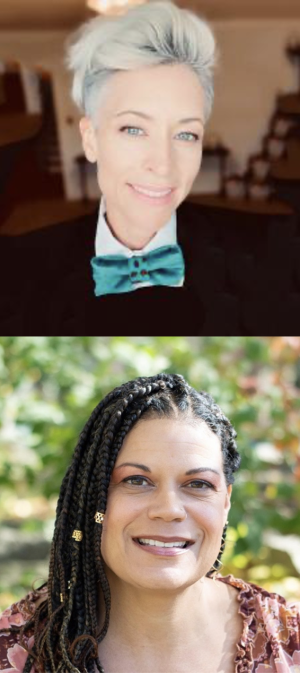
Your PowerPoint slides are not projecting on the screen as students trickle into the classroom. Normally you like to have everything prepared before their arrival, but ITS is not responding to your calls. Running on coffee and a few hours of sleep you begin the lecture only to be interrupted by late students. Pushing your hospitalized parent out of your mind, you continue with the lecture thinking that you never would have disrespected your professors this way. A student in the front row is nodding off to sleep. You made it to class early after dropping kids who were screaming for your attention, with runny noses, off at daycare. An “A” student catches your eye. They are diligently taking notes despite having pulled an all-nighter. It is a scene all too familiar to educators. We check our bodies and emotions at the door and wonder why students don’t also. Our advisors and mentors taught us to be disciplined. Prioritize your research and writing in order to succeed. The life of the mind is built upon outsourcing the mundane things like cooking and cleaning to someone else. Students who prioritize learning information to the neglect of their health are rewarded within the status quo. When they compartmentalize their learning from the messiness of life, it is a relief to the educator. They focus on ideas rather than responsibilities to community. Conversely, students overcome by malnutrition, lack of resources, and abuse are punished. They face negative consequences for prioritizing caregiving over self-care. The message is clear: students who are overcome by contexts beyond their control or extenuating conditions are left to “figure it out” as an acceptable pedagogical tool of disciplined thinking. We as educators often assume that the process of learning is for the students, and our job is to deliver content. We use words like “rigor” and “grit” to put the onus on students to persevere through the stresses of learning. Those who don’t succeed presumably were not worthy. But what if we as educators are the problem? Unhealed trauma certainly inhibits student learning, but, perhaps more to the point, the unhealed trauma of educators perpetuates harm in the classroom. What might trauma-informed pedagogy look like? Stacy Williams explains that trauma is not defined by events, but by the lingering effects on our brains and bodies. People can experience the same event and some seem to emerge unscathed, while others may be left struggling to return to their daily routine. This explains the differing levels of impact upon communities with shared experiences and divergent effects. Rather than adjudicate whether the student’s distress is reasonable (the loss of a pet, end of a romance, hunger, discrimination, etc.), we would do better to model teaching and learning as embodied and contextual. We (the authors) suggest that as educators, one of the best things that we can do to improve pedagogy is to attend to our own bodies and emotions. With this baseline in mind. we can begin to unpack the experience of the professor described above. Perhaps the late student was also visiting a loved one in the hospital, the sleeping student might have also been up most of the night with a sick toddler, and many students have missed breakfast. Paying attention to our own needs influences how we hold the learning space. Stress and trauma disrupt the students’ ability to learn, but they also disrupt educators’ ability to teach. The lingering effects of stress and trauma show up in the brain and body faster than logic and reason can process and remain in the body systems much longer than people realize. Which professors and mentors reminded you to attend to your wounds? If they didn’t, what are the lingering effects? In order to avoid retraumatizing others, initiate self-awareness and get curious about the behaviors of your students. Here are a few questions we propose to get you started: When did I last eat a nutritious meal and drink a full glass of water? Do I need to go outside for some movement? Who have I deeply connected with this week? In short: what do you need today to be the best version of yourself to show up for others? Attentiveness to your bodily and emotional needs sets the tone for trauma-informed teaching and learning.
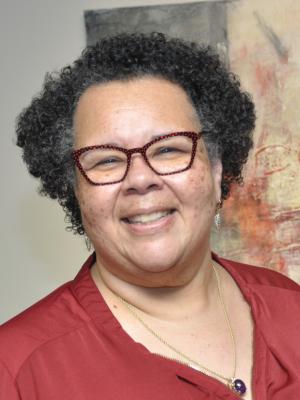
I do not believe teaching, itself, to be miraculous. I can bear witness to miracles which have come with teaching. The wonders come in the learning. Learning is both improbable and extraordinary. Classrooms with adult learners can be places where the splendor of miracles is known. The first kind of miracle depends upon time. On the first day of the course, students racked with hesitation, reticence, nervousness, fear of failure, and fear of success, are the same students, who miraculously, enter the classroom on the final day of class with confidence, sometimes swagger, having metabolized that which they did not know. Time can afford us miracles if we can see the shifts, modifications, accepted considerations, and the full out rethink. Sometimes, over the span of a few semesters, or in-between the first session and the last, through learning activities, discussions, cognitive dissonance, the yearning for wisdom, the torment of grappling with new ideas, and the challenge of grasping new practices, skills, and habits, students learn that the world is more than they previously suspected or feared. The second miracle happens when the illusion of inferiority is successfully shattered. Teaching is an embodied art. I inhabit any classroom as I am. I am, by the pronouncement of my physical body, an African American, woman, age 60 plus. By U.S. societal norms created by white supremacy, capitalism, patriarchy, misogyny, and racism, I am perceived as inferior. I am, according to the accepted (albeit contested by some) systemic hatreds which permanent social norms, at the bottom of the societal and academy hierarchy. I am, as an older Black woman, less than those who are men, those who are white, and those who are young. The politics of inferiority is operational in society, and these real and dangerous mindsets enter my classrooms in the imaginations of my students. Inferiority is not scientific, but it is a real part of the moral matrix of U.S. society. Regardless of my credentials or standing in the academic community, my students have been given license by ruling power structures to see me as inferior. The miracle is when I can dissuade students, Black, white and otherwise, that the lie of inferiority must be exorcised, purged, eliminated. Most times I have not been successful in provoking this miracle--it is not an easy miracle to summon. But there have been a few times I can bear witness. There have been a few students who have left my courses no longer deceived or duped by patriarchal mindsets. They discover the ability to refuse to live in, and believe in, a narrow world of sameness and homogeneity. They summon the capacity to see a world that is dripping with Maybe? and Perhaps? This is their miracle - they have had the audacity to accept the keys which unlock their miseducated minds. The third miracle is the most difficult to perform and not easily witnessed or claimed. It is the miracle of possibility. It is akin to the miracle of ridding students of white supremacy, but not exactly the same. Students, especially adult students, insist upon risk-less learning. They want assurances, guarantees--proof. They prefer learning experiences to be like Disney World simulations, no risk and only gleeful reward. A championing of mediocrity. They want learning that is carefully scripted, with an ending that is foolproof and predictable. With experience, I have learned to watch for the glad surprise in my teaching. It is in the surprise, the unplanned for and sometimes unpleasant, that we have a chance of being visited by new possibility, new opportunity, and perhaps grace. Some semesters, everything happens as planned on cue, and with exacted precision. These are the semesters I know the learning is flimsy. Beyond these three kinds of classroom miracles, my hunch is that the best miracles happen when I can-- simply and with a Buddhist’s kind of detachment--invite students to take from my teaching what they can. And so, for our own critical reflection, we ask: By the end of your long and productive teaching career, what miracles will you have performed or witnessed? What miracles, between now and retirement, will you invoke, provoke, evoke in your classrooms or in your teaching life? If one of the tools of teaching is the ability to rely upon, ascertain, identify, or produce miracles, what habits, practices, or strategies will you need to nurture in order to strengthen this capacity? When you were a student, what miracles assisted your learning and sustained your knowledges? Keep in mind that the fulfillment of student learning outcomes, the successful completion of assignments, and the granting of high grades does not necessarily indicate the activity of the miraculous.
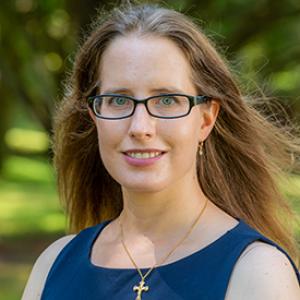
One of the tools I find essential for teaching is journaling. I recently wrote about how I journal for my own research, and I have incorporated the same practice in my teaching. When I teach introductory religious studies classes, for example, the course objective I focus most on is helping students learn how to read and interpret religious texts. In the end, whether the students retain what they’ve learned about—for example—early church heresies and the Christian understanding of the Trinity, the skill of being able to read a religious text and understand the author’s ideas about God can be more broadly applicable. Journaling assignments are an effective way to get students to actively think about their reading and class content instead of just glossing over it as they prepare for class or trying to passively retain it. As I note in my assignment guidelines, journals are powerful tools of reflection, that is, “the process whereby we reconstruct and make meaning of our experience.”[1] Journaling also helps students become better writers, both by providing the space to think through ideas informally and by helping build writing motivation and fluency. I use journals in undergraduate and graduate classes, but in what follows I will provide practical guidelines based on how I’ve used journals in introductory courses. For more examples and ideas, I highly recommend the book Journal Keeping by Dannelle D. Stevens and Joanne E. Cooper that I quoted above. In my introductory religious studies course, “The Christian Tradition,” I have students write reading response journals using the journal feature on Blackboard, a practice I began during the pandemic. The accompanying image is a screenshot of the instructions for the journal that students see on Blackboard. For this, students free write their responses to the reading assignments before class. The class meets twice a week, but I only require the journal entry to be done once a week unless students are absent, in which case they must do their journal entry for the class they missed. I emphasize that I am not looking for students to be “right” or “wrong” about their interpretation, but to engage with and respond to what the text says from their perspective. I ask them to complete this before the class to prepare them for our discussion. One change I implemented this past semester was to delay this at-home journaling until the fourth week. Instead, we did journal entries in class after the discussion, and I provided written feedback to help the students learn this skill. After we did this in class, I could use the Blackboard rubric to give minimal feedback on their online journal entries. Because students in this class only write one entry a week, I read and grade every single entry they complete. In contrast, in an interdisciplinary general education course that I teach titled “Discovering the Self in the Universe,” I ask students to use a physical journal just for that class. They write responses to the reading assignments, but they also use the journal for in-class reflection. This class is writing intensive, so students do much more journaling than I require in “The Christian Tradition.” Because the students are writing more, I do not read every entry in this case. For grading, I collect the journals three times during the semester and check for completeness (50 percent of the grade), then read five entries which I grade for quality (50 percent of the grade), having provided them with a simple rubric at the beginning of the semester. Students generally respond positively to the journal. In last semester’s final course evaluations, in response to the question on what was most effective about the class, several students mentioned journaling. Students noted that this assignment “helped me examined [sic] the text more closely” and “really helped me express my opinion and also remember what we did in earlier sessions.” I was teaching “Discovering the Self in the Universe” for the first time, and in that class one of my students, Sebastian Derflinger (name used with permission), chose to do his final presentation—about what was most beneficial for them in the course—on the practice of journaling. Derflinger is from Austria, so he noted that the ability to write freely in English without worrying about mistakes was a particular benefit for him. He also noted the importance of building the habit of journaling to improve how he expresses his thoughts, record important ideas, and go deeper into the course content. He said that journaling in my class led him to start a private journal about his goals, experiences, and thoughts. These are just a few examples of student responses, but they give a sense of the positive responses I receive about this. I am thus a huge proponent of journaling, both for myself and for my students. [1] Dannelle D. Stevens and Joanne E. Cooper, Journal Keeping: How to Use Reflective Writing for Learning, Teaching, Professional Insight, and Positive Change (Sterling, VA: Stylus, 2009) 3.

Many of us have probably been following the Hamline University controversy. I first came across it in InsideHigherEd and the New York Times, whose links I sent to my colleagues with a “Yikes!” attached. In case you haven’t been following it, it’s good to know about. It concerns all of us. To briefly recap, at Hamline University, in St. Paul, Minnesota, an adjunct instructor teaching a global art history class showed a famous painting of the prophet Muhammad in class, after warning students on her syllabus and then reminding them of her intentions that day. A student complained afterward; the complaint was that showing images of the prophet is “forbidden” in “Islam” (I can’t help but add these scare-quotes) and thus sacrilegious. The administration concluded the incident was Islamophobic and declined to rehire the instructor for the next semester. Attempts by experts in art history as well as religion to explain the value of showing such images (and to counter the claim of Islamophobia) had no effect. There are many important layers here, including students’ very real experiences of racism and Islamophobia on the small campus, how instructors contribute to students feeling like they belong (or not) in the classroom and on campus, what counts as “Islamophobia,” academic freedom, the control that faculty should or do have over curriculum, the role of expertise, the invisibility of religion in DEI, the increasingly popular model of a modern American university that seems more like a business or a corporation than an institution of inquiry and higher learning, the reminder that universities are inequitable places of labor, the power that students do hold over us (and not just the other way around), and more. I was bothered by the student(s) ignoring the instructor’s multiple “trigger warnings,” the complaint quickly making its way to administration (vs. being further addressed with the instructor directly), and, of course, the administration reacting in the way that it did. Lots of mishandling, it seems to me, by multiple people at multiple levels. Given that I’m going back into the classroom this week, I was also thinking about my own pedagogy, our disciplinary tenets and values, and the whole point of learning. I’m not a specialist in Islam, but, like many of us, I am responsible for covering Islam when I teach my introductory World Religions course. I am less concerned, even at the intro level, in teaching students about facts, which can and do change over time, and more about concepts, questions, debates, and approaches in the study of religion. I find inspiration in the four principles of religious literacy from Harvard, one of which is that “religions are internally diverse.” This particular point is so important to me that I include it in my classes as a learning objective. In past iterations of this course, I have even addressed the very issue causing all the controversy at Hamline, by assigning pieces like Omid Safi’s brief “Why Islam Does (Not) Ban Images of the Prophet.” (Omid, an instructor of mine in college, was interviewed for the NYT piece, to share his perspective as a Muslim and a specialist in the area.) As the NYT piece notes, “Most Muslims believe that visual representations of Muhammad should not be viewed…. There are, however, a range of beliefs. Some Muslims distinguish between respectful and mocking caricatures, while others do not subscribe to the restriction at all.” In a forum after the incident, a professor of religion tried to raise the question with which we are all, in the discipline, familiar: “what does one do when the Islamic community itself is divided on an issue?” The same could be asked of any religion. Students, in a time of their lives where they tend to default to or prefer black-and-white dualistic thinking, often assume religions are monoliths—static entities with clear-cut boundaries and universally shared beliefs and practices. It’s comforting to feel certain about who’s in and who’s out, what’s acceptable and what’s not. We tend to put people into categories. We love to think we know. And it’s not just students. A book I use in one of my classes makes frequent claims about the beliefs and practices of “all Muslims…,” despite there being 1.9 billion worldwide. Of course, assumptions, generalizations, and stereotypes exist for all religions (e.g., Buddhist societies are peaceful, despite evidence otherwise), but Islam has some of the most persistent and pernicious in our country, sometimes with deadly real-world repercussions (like the murder of the Sikh man after 9/11 because he was presumed to be a Muslim). Such assumptions cause me special concern, perhaps, because my daughter is half-Afghan. I take it as my professional, and personal, duty to ensure that students who finish my courses are disabused of notions of reductive homogeneity and dangerous stereotypes. (Even seemingly positive stereotypes, like the “model minority” stereotype, can be harmful, research has shown). In recent years, I have struggled with the Islam unit in my intro course. I like to organize the different units around big questions related to the study of religion, not just the individual religions themselves (eg., the question “is Buddhism a religion?” allows us to get into the definition of religion and the history of the field, as well as gives us a lens to sort through the specifics about Buddhism from the textbook chapter). I wanted an Islam unit that left room for the basics, that confronted and corrected misinformation, that tackled urgent and big-picture questions, that didn’t harm any Muslim students in the class, and that seemed relevant to students’ lives by tapping into, for instance, current events. A tall order. This Hamline controversy has provided the perfect material for me this semester. This spring, my Islam unit will be focused on: What happens when religious people disagree? (I’m sure I’ll finetune this question, and the unit’s assignments, in the future.) In addition to a chapter on Islam from the textbook I use, I am going to ask students to read some of the news articles reporting on Hamline, as well as other relevant material (like Christiane Gruber on images of the prophet), outside of class. I will likely alert them to the fact that these articles depict images of Muhammad, so they can take proper precautions and prepare for self-care. (I admit here to having an ambivalent stance toward “trigger warnings,” as I believe, fundamentally, that learning is an often-uncomfortable enterprise; that higher education’s purpose is to expose students to content that they may disagree with; and that it is necessary, in order to be a citizen of a democracy, to be able to engage with people, perspectives, and material that you find objectionable, unsettling, or even “offensive.” Moreover, there is evidence that trigger warnings don’t really work.) Framing the unit in this way will also help to connect back to earlier conversations we’ll have in class about insider vs. outsider approaches to religion, another important aspect of religious literacy. Some instructors may now choose simply not to touch the topic with a 10-foot pole. Why bother courting controversy with a discussion about or an analysis of images of the prophet? I get it. I’m not tenured, so I have to think carefully about the kinds of risks I take in the classroom. But allowing the perspectives of a few or even a majority to dictate the terms under which we view or can talk about an entire group is a bad idea—and I believe we have a disciplinary responsibility to confront these instances when they occur. Religions, like any groups (racial, political, national, you name it), are quite diverse things. Catholics for Choice! Jews for Jesus! This diversity is not only something to clarify in our courses, but something to center and celebrate.
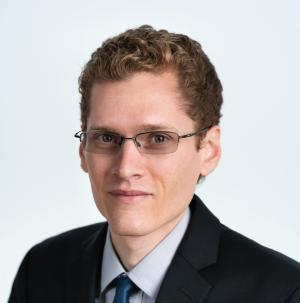
When was the last time you had a student visibly start paying more attention because of something you said? What were you saying? What were you doing with your body? One of the things I do that most consistently causes certain students to perk up is reference other languages. When trying to define theology I compare it to the Spanish Dios, which is a lot closer to the Greek theos than the English “God.” Similarly, the Spanish iglesia sounds a lot like the Greek ekklesia (it derives from it via Latin), which is useful for helping students remember what ecclesiology is, even if the spellings are different. My students are used to teachers and professors introducing new vocabulary by referencing the roots of the words, and similar words, in English. Their bodies, the surprise on their faces, tell me they find it shocking to hear Spanish and other non-English languages used in the classroom. However, the bodies that make up my students reflect a need for a multilingual focus. According to the U.S. Census Bureau, sixty-six million Americans (21.5%) live in households where a language other than English is spoken. Most, of course, also speak English. This reality is reflected in our classrooms. In a recent term, my 130 students collectively spoke Arabic, Dutch, French, Gaelic, German, Gujarati, Hindi, Italian, Japanese, Korean, Mandarin, Polish, Portuguese, Punjabi, Spanish, Tagalog, Ukrainian, and Vietnamese. At one school where I taught, 26% of my students were multilingual to some degree. In a larger city, at another institution where I served, 49% of my learners claimed two or more languages. I don’t know how these numbers reflect the broader campus communities of the universities where I teach, or the percentages in higher education as a whole. However, language is central to learning. How can we teach well if we don’t consider what languages our students speak? How can we design curriculum if we don’t consider their cultural and linguistic backgrounds? How can we help them develop their proficiencies in their other languages if we are not open to incorporating other languages in our teaching? This is not just an issue of pedagogy. It’s an issue of justice. We invest a lot in helping white students learn a second language in school, but typically devote minimal resources to helping native speakers learn to read and write in their non-English languages. At worst, we bar them from using their native language(s) out of the utterly mistaken (so says the research) conviction that doing so helps them learn English faster. Believing that students who grew up speaking Spanish or Polish or Arabic should be able to read and write in those languages by the end of college should not be a radical or rare position. I imagine some of the surprise of my using Spanish and other languages in class is that, as a white person, I don’t look like I should speak them. They’re not wrong. I’m a product of the U.S. education system. A native English speaker, I am functionally monolingual despite having studied Spanish, German, and biblical Greek. That doesn’t mean I can’t find ways to signal that I know my classrooms are populated by multilingual students. This might mean making comparisons to words I know in other languages. Or, providing students non-English editions of required readings. Or, encouraging students to use their other languages when conducting research. The tongue is part of the body. Language is part of embodied teaching. If I want to embrace my students’ identities, using their languages is a good place to start. It is a counter-imperial gesture, one that challenges the hierarchy of languages that equates English with power.
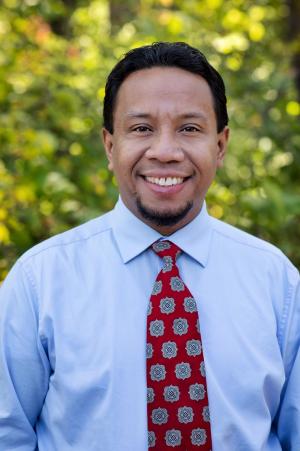
English is not my first language. The first time I went to an English-speaking school was in Baguio City, Philippines, in 2003. I was nervous about learning in a language that is not my own. Would I manage? And what if I failed? These questions haunted me as I boarded the airplane from Jakarta to Manila. It’s the first semester, and so I take a systematic theology class. As the professor is teaching, a question burns in my mind, something I really want to ask him about. I gather my courage and raise my hand. The professor sees me. He turns to me and says, “Eka, do you have a question?” But as he turns his—and everyone’s—attention to me, I feel as if the world is spinning beneath me. The words I’d planned vanish from my brain. My feet shake. My whole body explodes with heat. I’m nervous and embarrassed because everyone’s looking at me, waiting to hear my question. I try to open my mouth but no longer know how to express my question in English. Seeing me struggle, the professor patiently says: “It’s okay. You can do it!” Knowing that he understands my linguistic limitation helps, but it nevertheless takes me a few minutes to articulate my question. The memory of this experience still vividly reminds me that learning in another language is not at all easy. It takes a lot of bravery to do it. Fast forward to 2017. I am still pursuing my doctoral degree at Vanderbilt University. But on this day I’m teaching a Sunday school class at a local church. A guest (a white man) is in the class, wanting to learn from me. While I’m talking, I notice his discomfort. Finally, he speaks up: “I don’t understand what you’re saying. Your accent is too strong.” I’m totally embarrassed. I pause and collect myself, then smile and continue. I never saw him again. Not long after this experience, I have a conversation with an established scholar who teaches at a major seminary in the US. He is from an Asian country, and he too speaks English with an accent. He tells me that in his first years of teaching, some students did not want to take his class because they didn’t like his accent. Time to flip the script! When I was in the Philippines, I met a man from Alabama who spoke with a pronounced Southern accent. Sometimes that accent, plus the speed at which he spoke, meant that I couldn’t understand what he was saying. Accent can indeed be a barrier to communication. Recognizing this taught me to respect this Alabamian and his linguistic background. Instead of expecting or even forcing him to speak with an Indonesian, Filipino, or Korean accent (which I readily understand), I pushed myself to accept his otherness and his difference, and over time I learned to understand his speech better. Rosina Lippi, a novelist and linguist, once told the Mercury News, “[A]ccent is often overrated as a source of communication problems… Often, what people perceive to be an accent problem is really due to other biases.”[1] Indeed. Linguistic prejudice is real. People who study language know that everyone has an accent. English accents take all kind of forms, even among native English speakers. An Australian accent is different from a Singaporean accent or an American accent. However, some accents are considered acceptable, and others are not. Who determines the acceptability of an accent? The issue is not whether one has an accent or not, but whether one’s accent is perceived as desired, or is frowned upon as “less than,” “foreign,” “uneducated,” or “uncivilized.” It is merely the hearer’s unfamiliarity with it, their discomfort, their sense of superiority, that deems an accent to be “foreign.” Now of course teaching requires oral linguistic performance. A teacher has to stand in front of the class and speak. In this context, accent in teaching is inevitable. It is an embodied performance because it involves the movement of one’s tongue, the intonation of one’s voice, and one’s breathing. Since our body is habituated in a certain linguistic environment, speaking with an accent is entirely inevitable. All speech is accented, always. Embodied teaching means teaching with an accent. In this sense, a teacher comes with their own unique accent. The question is: What accent is acceptable in a classroom? I teach at a seminary whose students come from many different places. We have a few international students as well. Whose accent should I use as a teacher? A Nigerian student from South Africa has a very different accent than a student from New York or a student from Tennessee. Should I use a Nigerian accent or a New York accent or a Southern accent? I decided to stay with my own accent, one that is shaped by Bahasa Indonesia underneath my English performance. Like Josephus, the first-century Jewish historian who admitted that he had a hard time attaining precision with the Greek accent because of the habit of his mother tongue (Jewish Antiquities XX.263–4), I too feel such a distance with English, and the habit of my mother tongue affects my English pronunciation. I have learned to embrace and refuse to be embarrassed by it. My accent is who I am. My accent tells a story of migration from Indonesia to the United States. It signifies the presence of otherness in my classrooms. I suggest that instead of seeing accent as a barrier to communication—for example, when students refuse to embrace the otherness of their teacher’s accent—teaching with an accent can also enrich our classrooms. Teaching with an accent clearly embodies otherness in the classroom. Such otherness challenges students to examine their linguistic prejudices or biases. It is not only the face of the other, but also the sound of the other that comes to them. It transgresses their familiarity, their bubble. It prompts them to ask themselves: Do I need to embrace it or reject it altogether? And in asking that, perhaps that difference will also prompt them to recognize that in rejecting or embracing an other accent, they are also rejecting or embracing an other self, an other’s story. For accent represents one’s story. As a legal scholar, Mari J. Matsuda, puts it: Your accent carries the story of who you are—who first held you and talked to you when you were a child, where you have lived, your age, the schools you attended, the languages you know, your ethnicity, whom you admire, your loyalties, your profession, your class position: traces of your life and identity are woven into your pronunciation, your phrasing, your choice of words. Your self is inseparable from your accent. Someone who tells you they don’t like the way you speak is quite likely telling you that they don’t like you.[2] To put it differently, the act of shutting down an accent is a violent erasure of one’s story, one’s identity, one’s self. Students’ reaction to a teacher’s accent will tell whether or not they are willing to welcome diverse stories, backgrounds, and knowledge productions. A teacher’s accent can function as a catalyst for the classroom’s open engagement with difference. [1] Mike Swift, “How Accents Define Us,” The Mercury News (blog), April 15, 2007, https://www.mercurynews.com/2007/04/15/how-accents-define-us/. [2] Mari J. Matsuda, “Voices of America: Accent, Antidiscrimination Law, and a Jurisprudence for the Last Reconstruction,” The Yale Law Journal 100, no. 5 (1991): 1329.
Categories
Write for us
We invite friends and colleagues of the Wabash Center from across North America to contribute periodic blog posts for one of our several blog series.
Contact:
Donald Quist
quistd@wabash.edu
Educational Design Manager, Wabash Center
Most Popular

Co-Creating an Online Education Plan
Posted by Samira Mehta on June 10, 2024

Cultivating Your Sound in a Time of Despair
Posted by Willie James Jennings on June 4, 2025

Are You Okay?
Posted by Nancy Lynne Westfield, Ph.D. on October 1, 2025

Judged by Your Behavior: Talk is Cheap
Posted by Nancy Lynne Westfield, Ph.D. on June 1, 2024

Plagiarism as Gaslighting in the Time of Artificial Intelligence
Posted by Brian Hillman on September 8, 2025